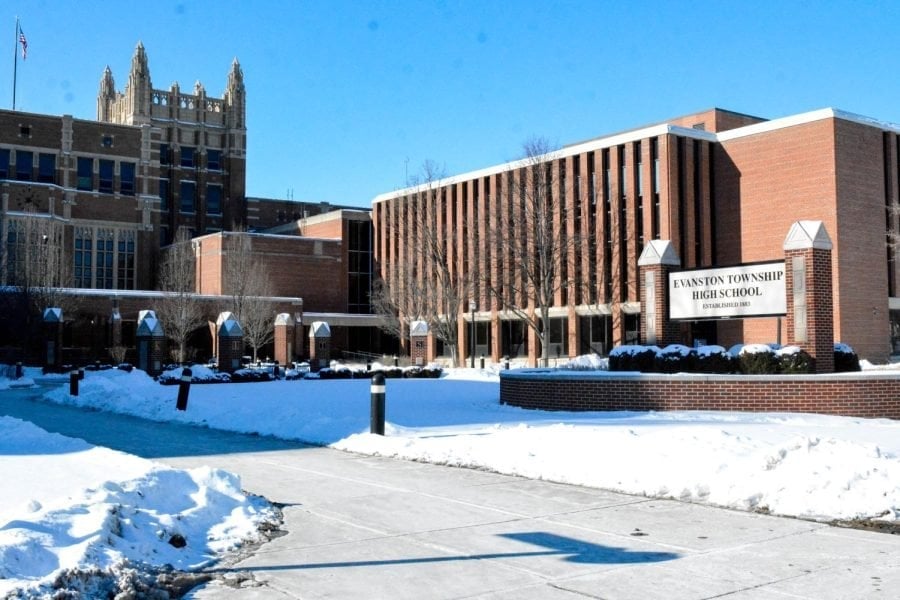D202 board of education discusses racial equity in scores and achievement
Daily file photo by Angeli Mittal
Evanston Township High School. The Board of Education spoke about student demographics Monday.
November 15, 2022
The Evanston Township High School District 202 Board discussed the school’s demographics and racial disparities at a Board of Education meeting Monday night.
Director of Research, Evaluation and Assessment Carrie Levy presented the opening school report, highlighting data about the decrease of about 100 Black students in the last five years. Those changes coincided with a lower Black population in Evanston and higher educational disparities by race during the pandemic.
District 202 Board President Pat Savage-Williams said these numbers represent consequences for Evanston as a whole.
Savage-Williams said the Black student population has been declining since 2018. She said this is consistent with Evanston resident demographic trends as well. Since the turn of the century, even parts of Evanston which have historically housed high percentages of Black residents have experienced demographic shifts, which some community members attribute to rising real estate costs.
“I’m thinking of families that are no longer in our community,” she said. “That feels pretty significant.”
The data presented by Levy illustrates that District 202 ranks at the “commendable level” compared to the state’s academic performance at large. Evanston students are above this state level.
Assistant Superintendent of Curriculum and Instruction Pete Bavis works on a committee that studies how to end racial disparities at ETHS. He said that designation is “maddening,” because the standard the state set for commendable achievement is low.
“It sets up a system where it’s okay to have 19 percent of students meeting or exceeding standards,” he said.
Compared to years past, Black students in the district are demonstrating lower scores in math, with distributions between 11 to 18 percent, Bavis said.
Because of this data, Bavis said the committee and board must focus on race as a crucial factor affecting student achievement. He said the committee will look into general classroom environments and the benefits of different types of instruction.
ETHS student representative Nicole Yao emphasized the importance communication between the board and affected members of the educational system during Monday’s meeting.
“A common theme for everyone was just kind of keeping transparency and communication with admin,” Yao said.
Board member Patricia Maunsell (SESP M.S. ‘92) said the district’s demographics, enrollment rates and academic performance are still seeing the impacts of the COVID-19 pandemic.
The board reported an 83% postsecondary enrollment rate in the two years after high school for the Class of 2016, which declined to 76% for the Class of 2020.
Maunsell indicated the importance of recognizing enrollment trends. She also pointed out that the board should be making tangible changes to support teachers in promoting racial equity.
“Kids’ lives have changed in so many ways (that) we don’t even know yet,” she said.
Email: [email protected]
Twitter: @divsgupt
Related Stories:
— District 202 functional needs team updates Board of Education


